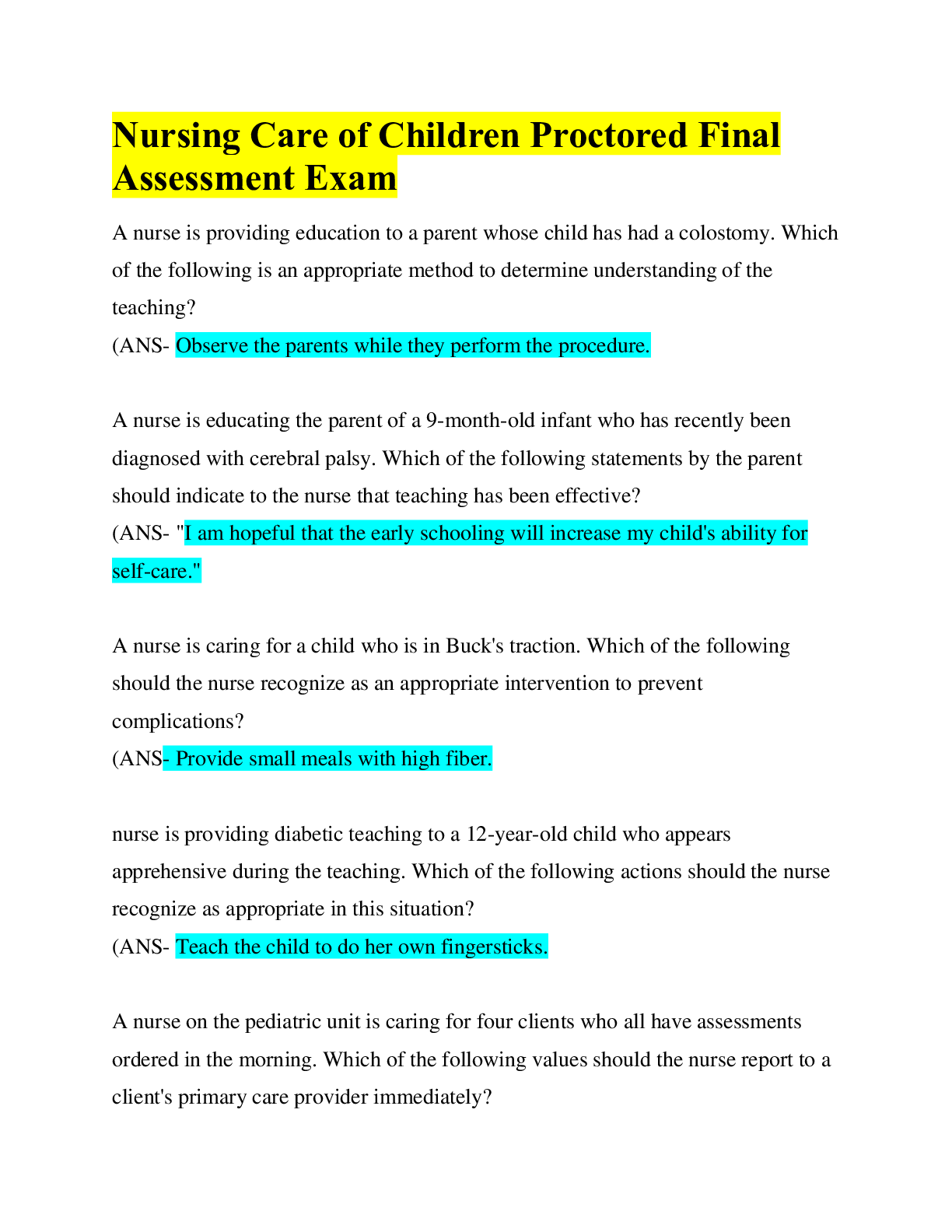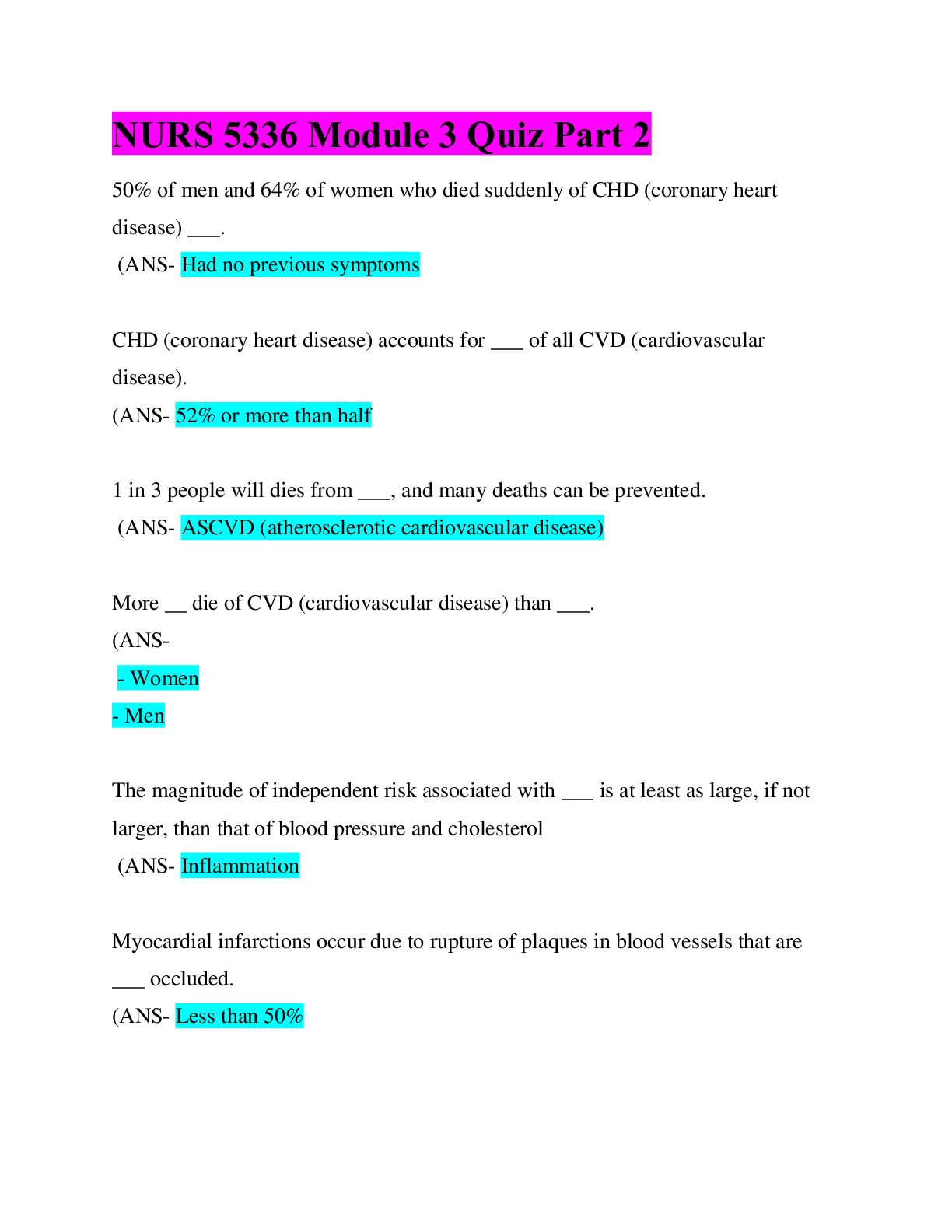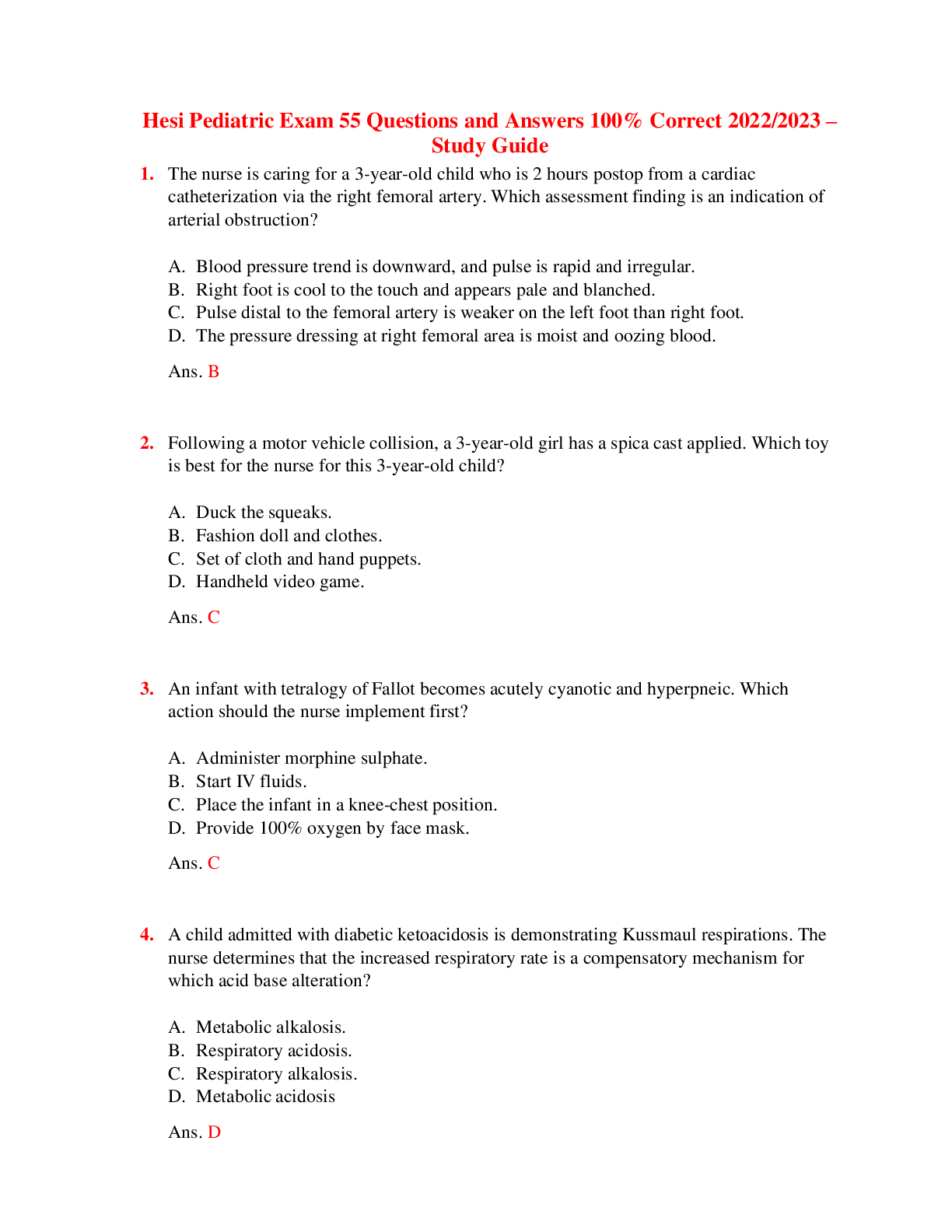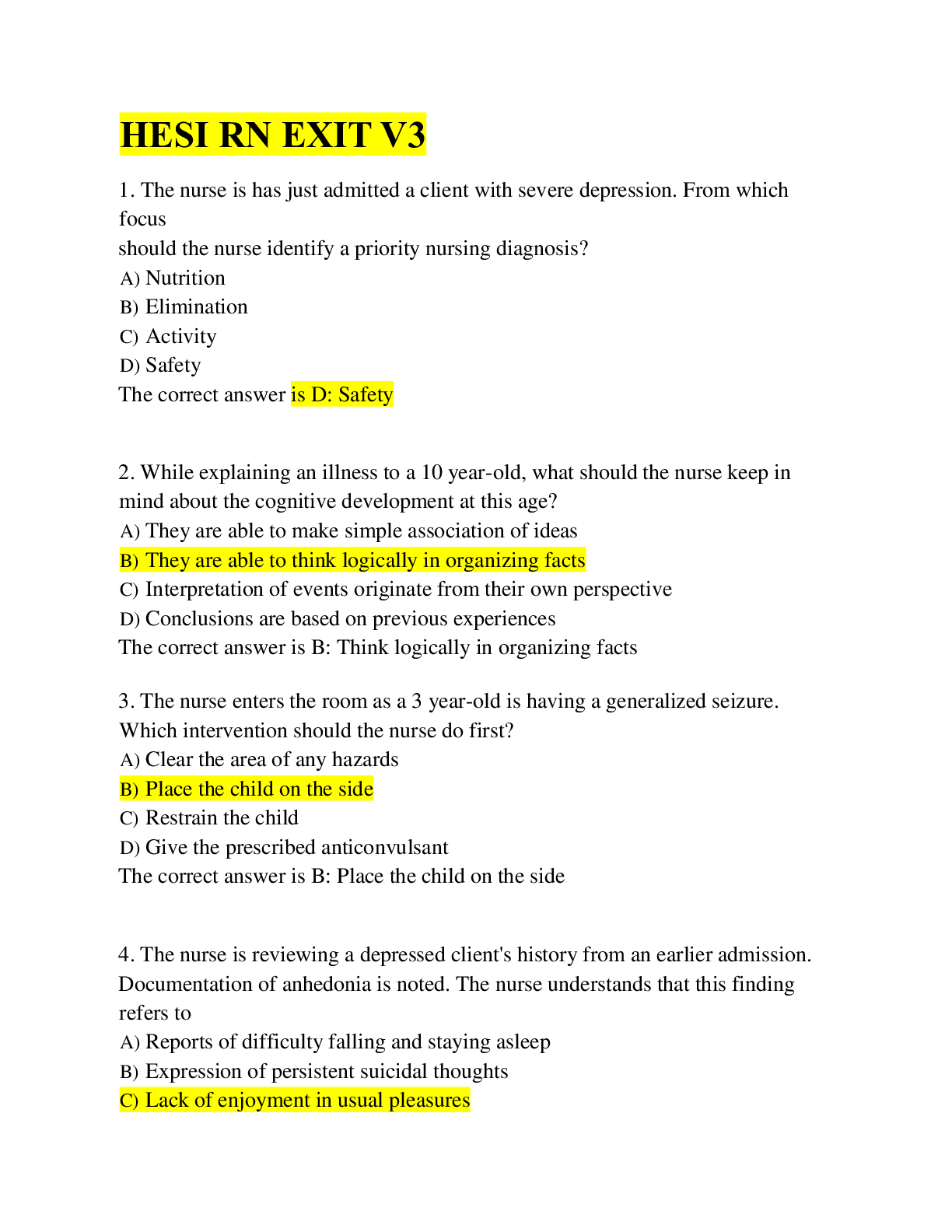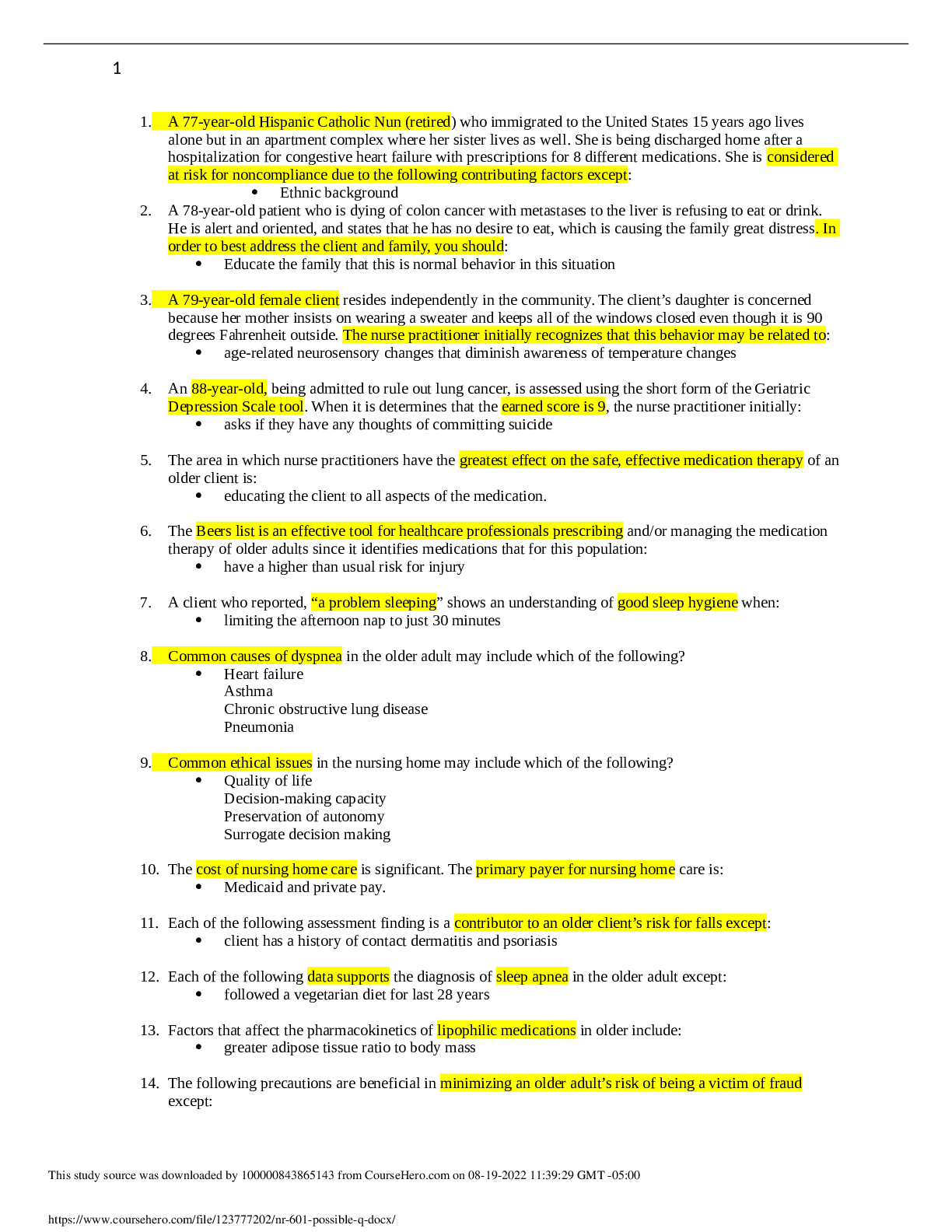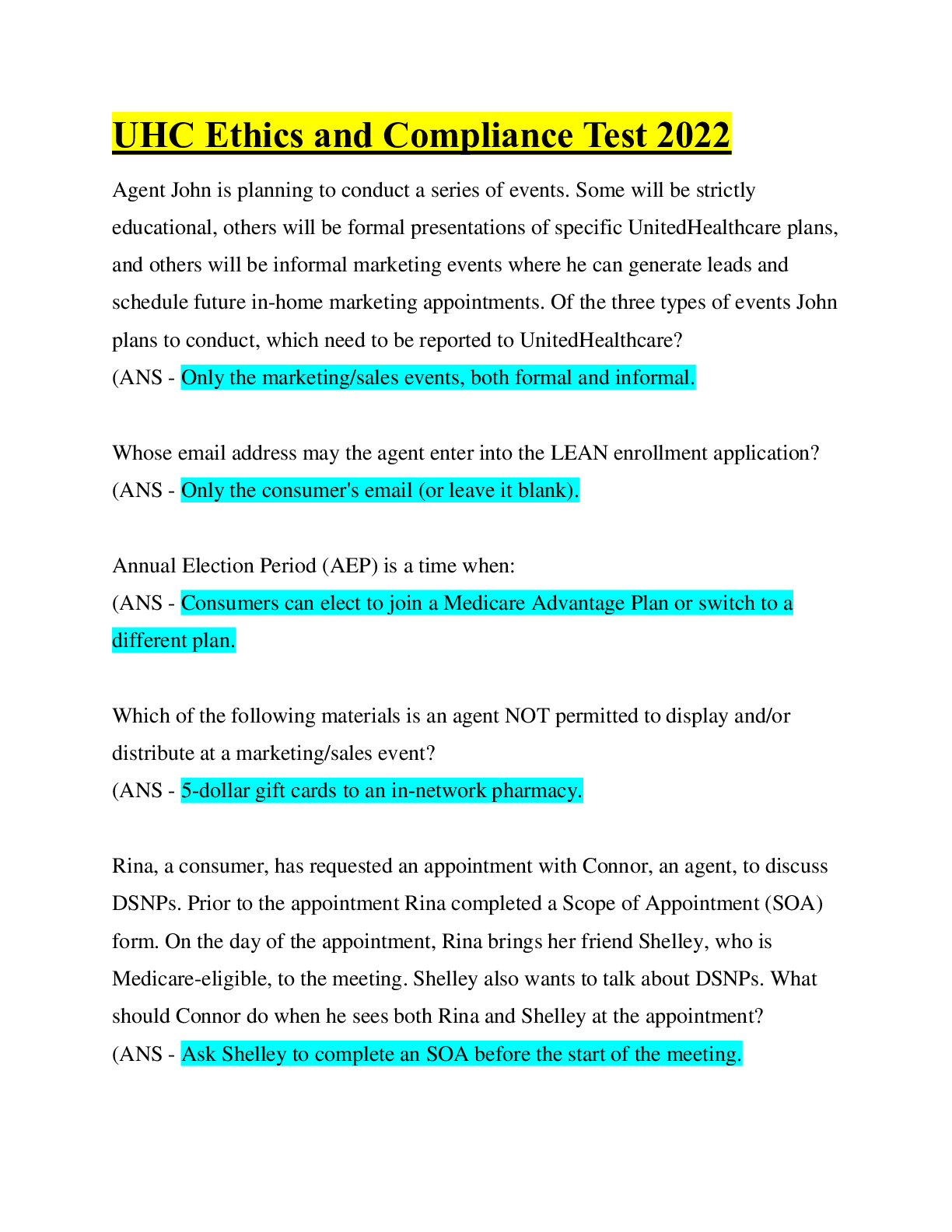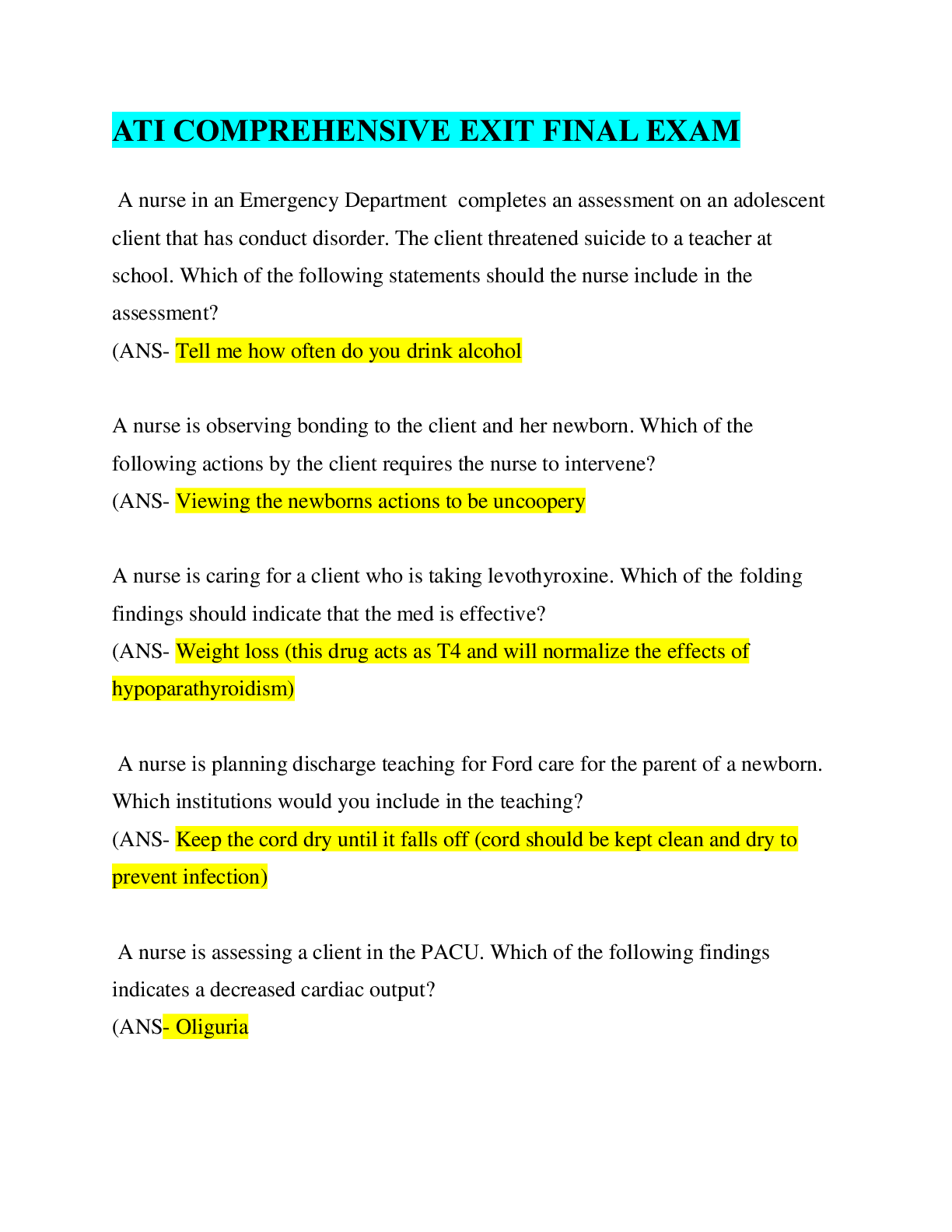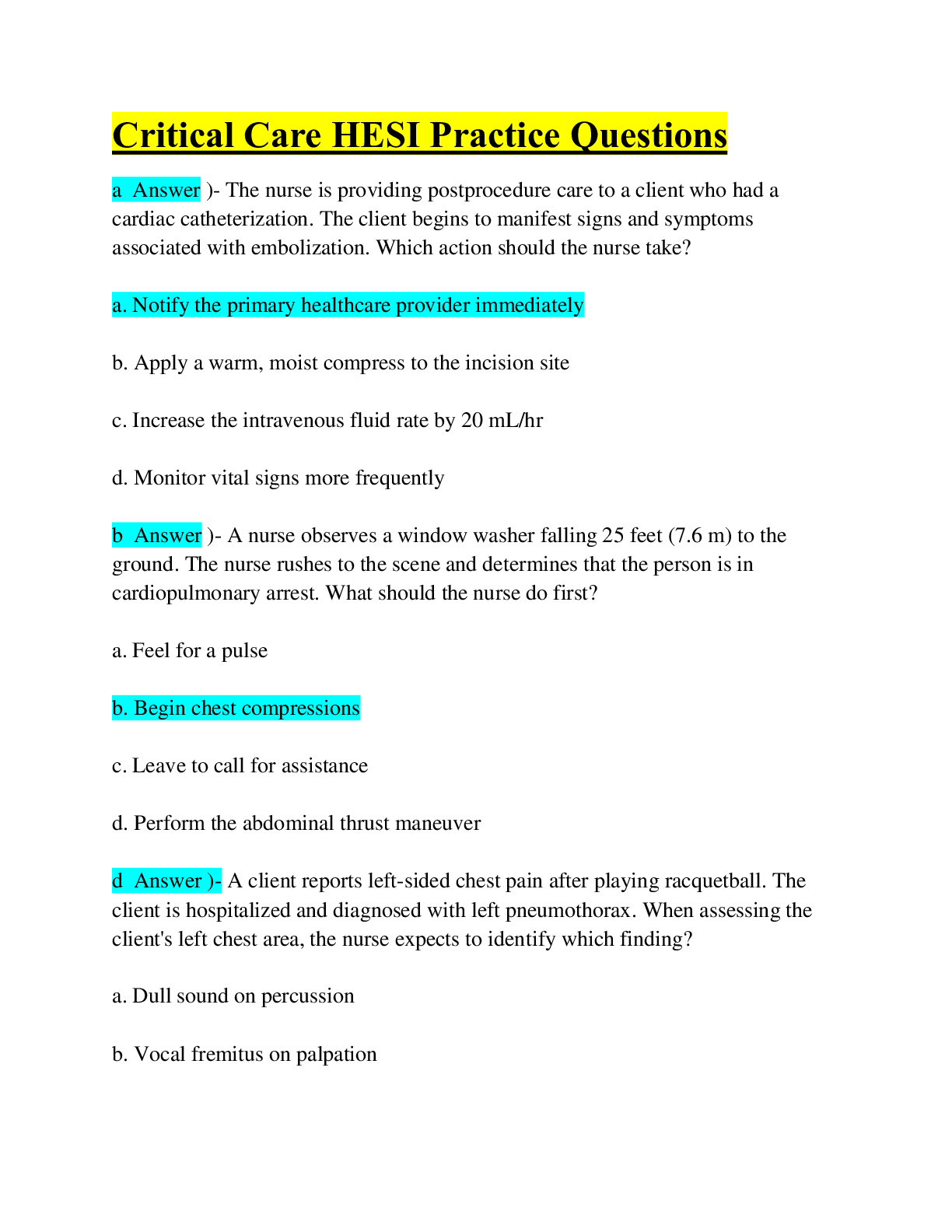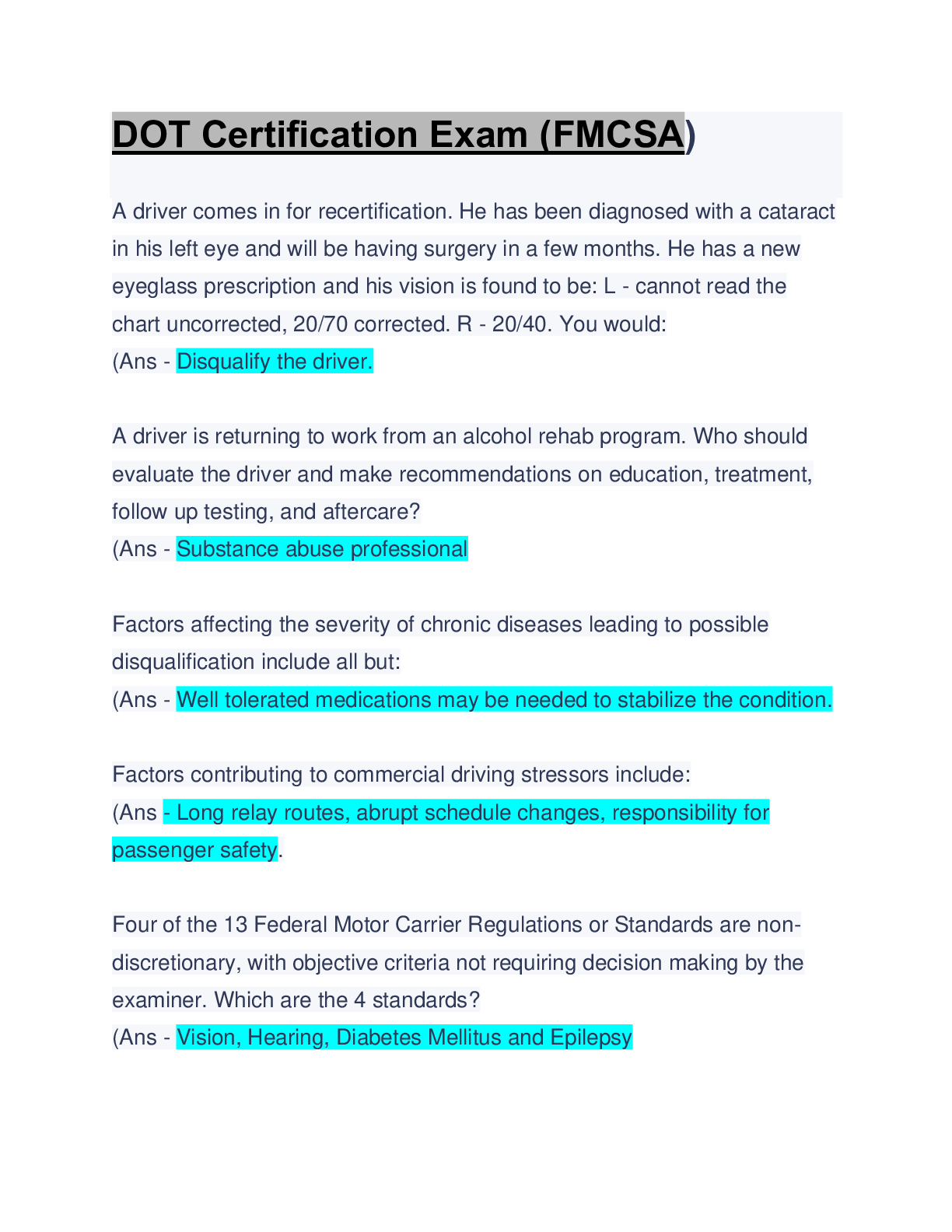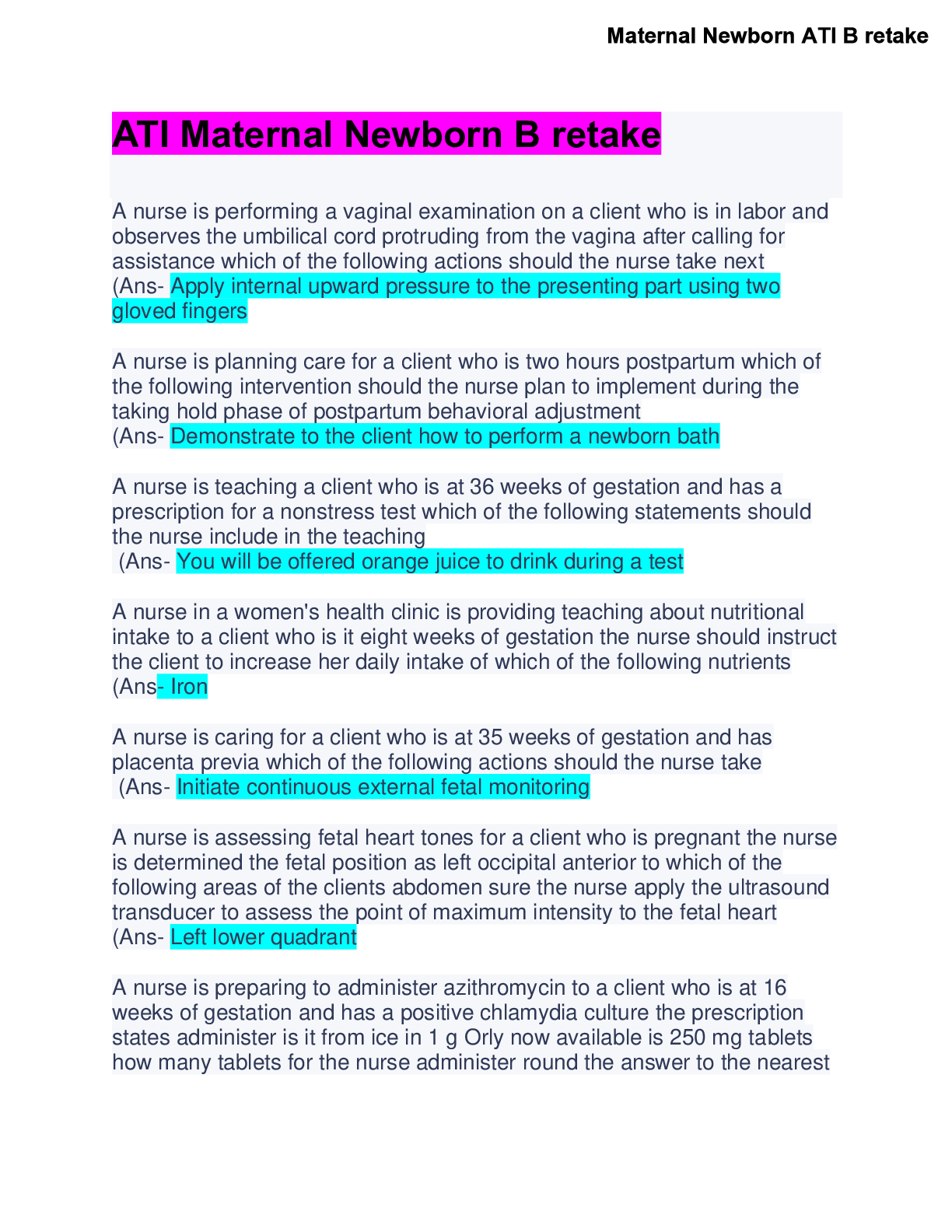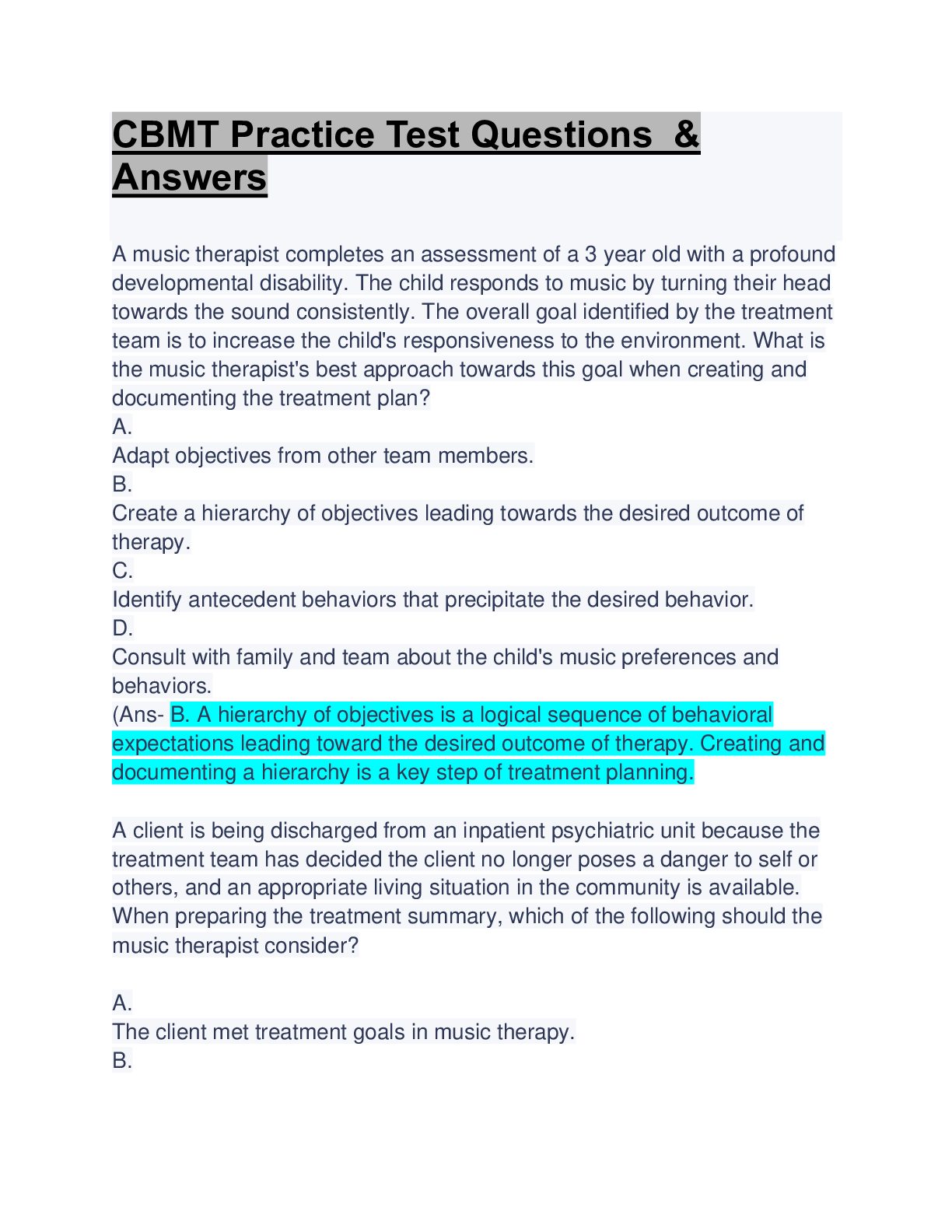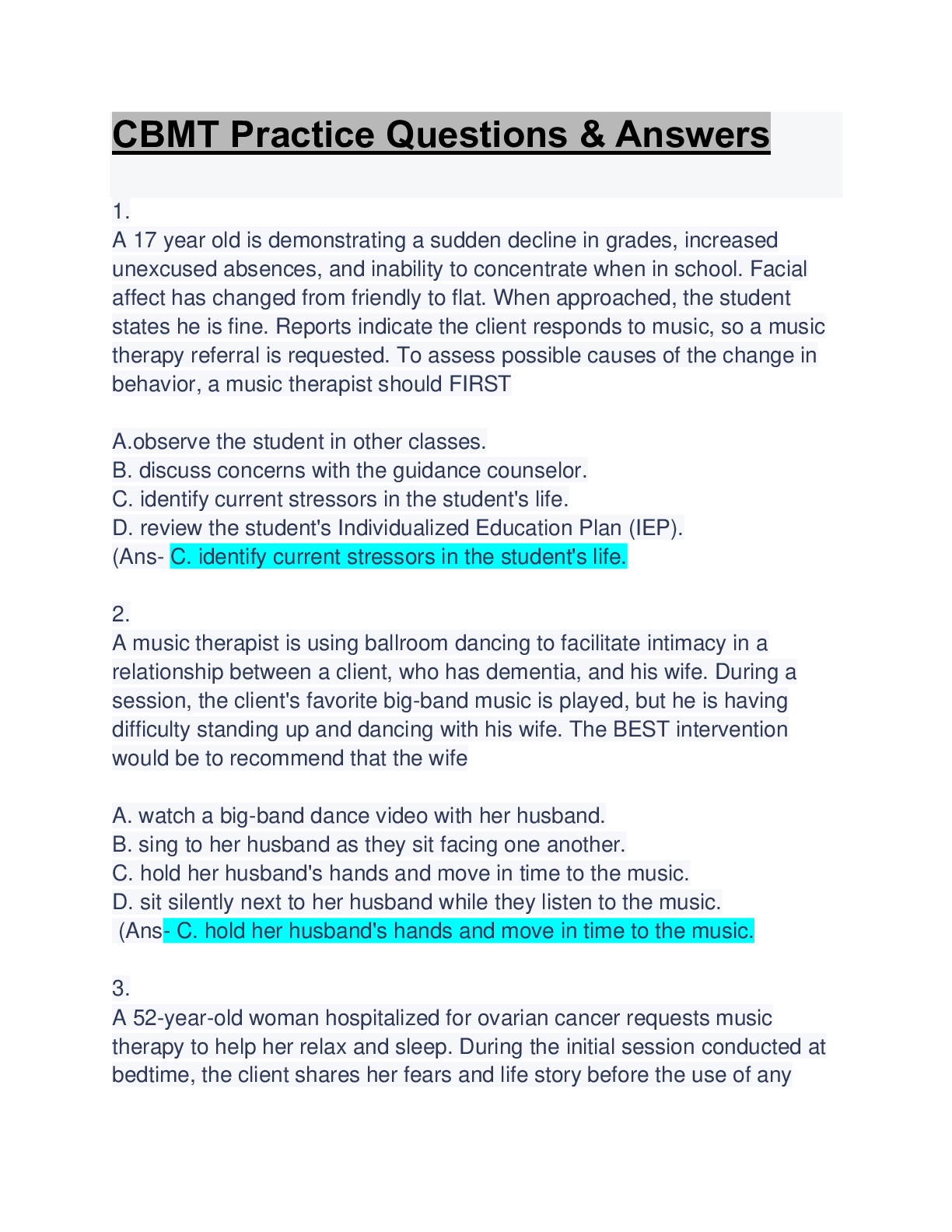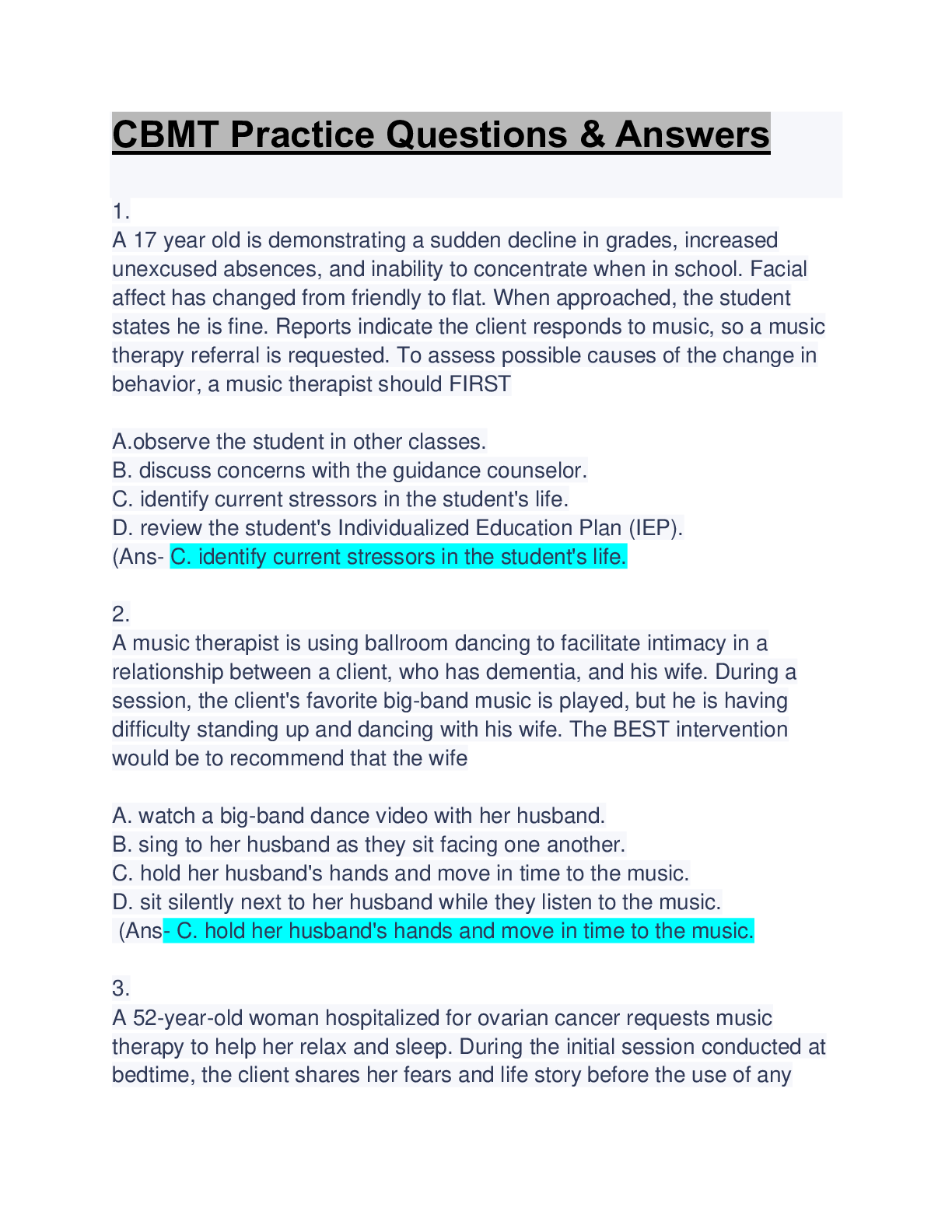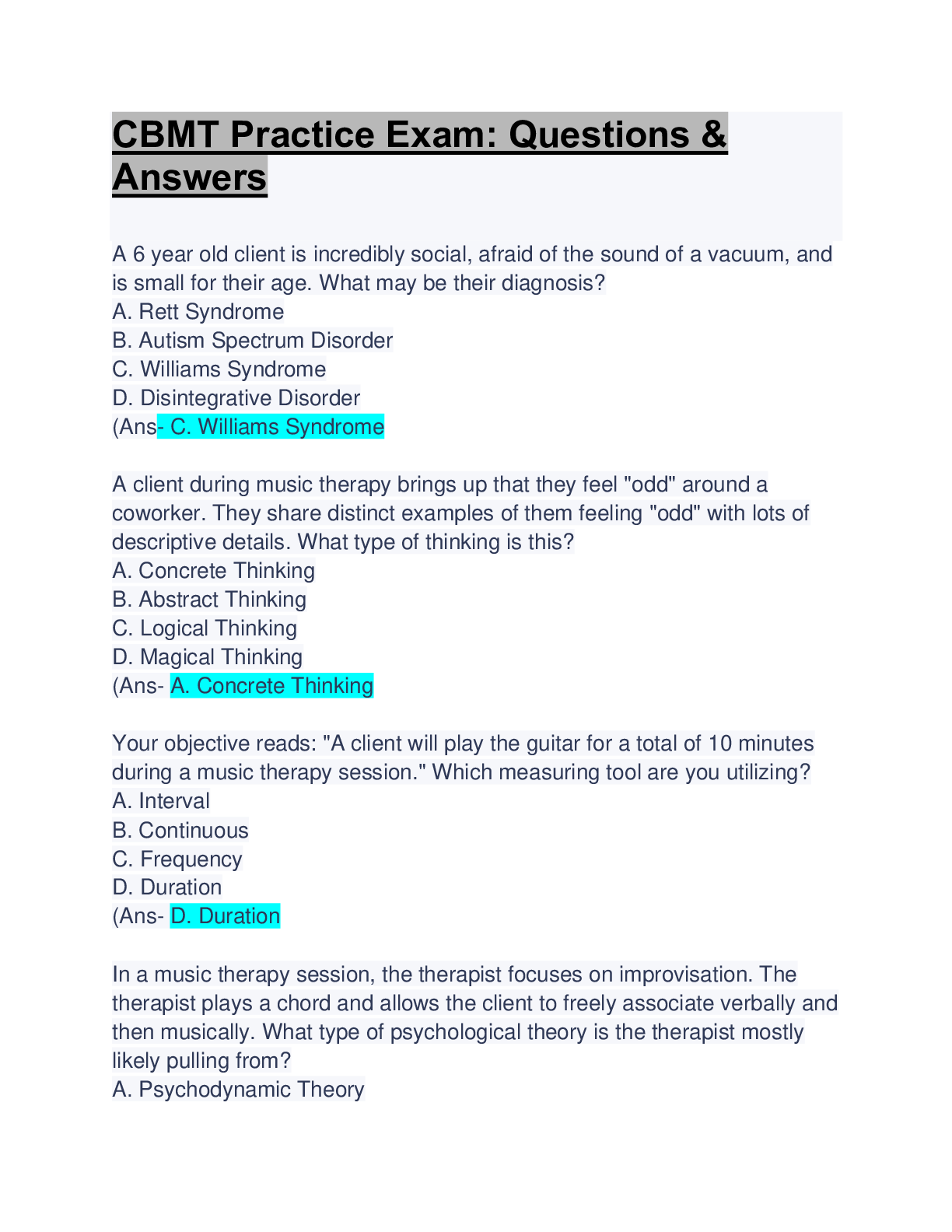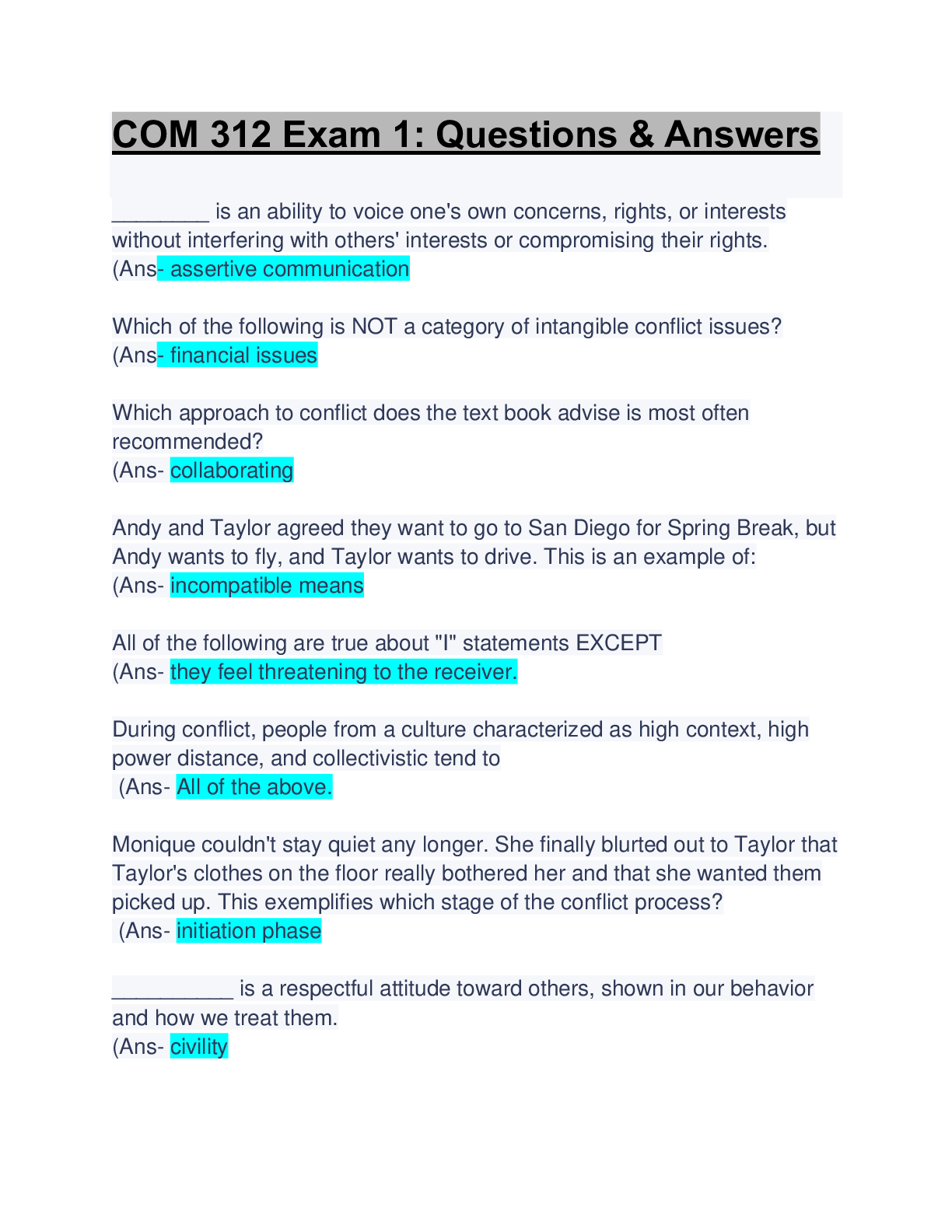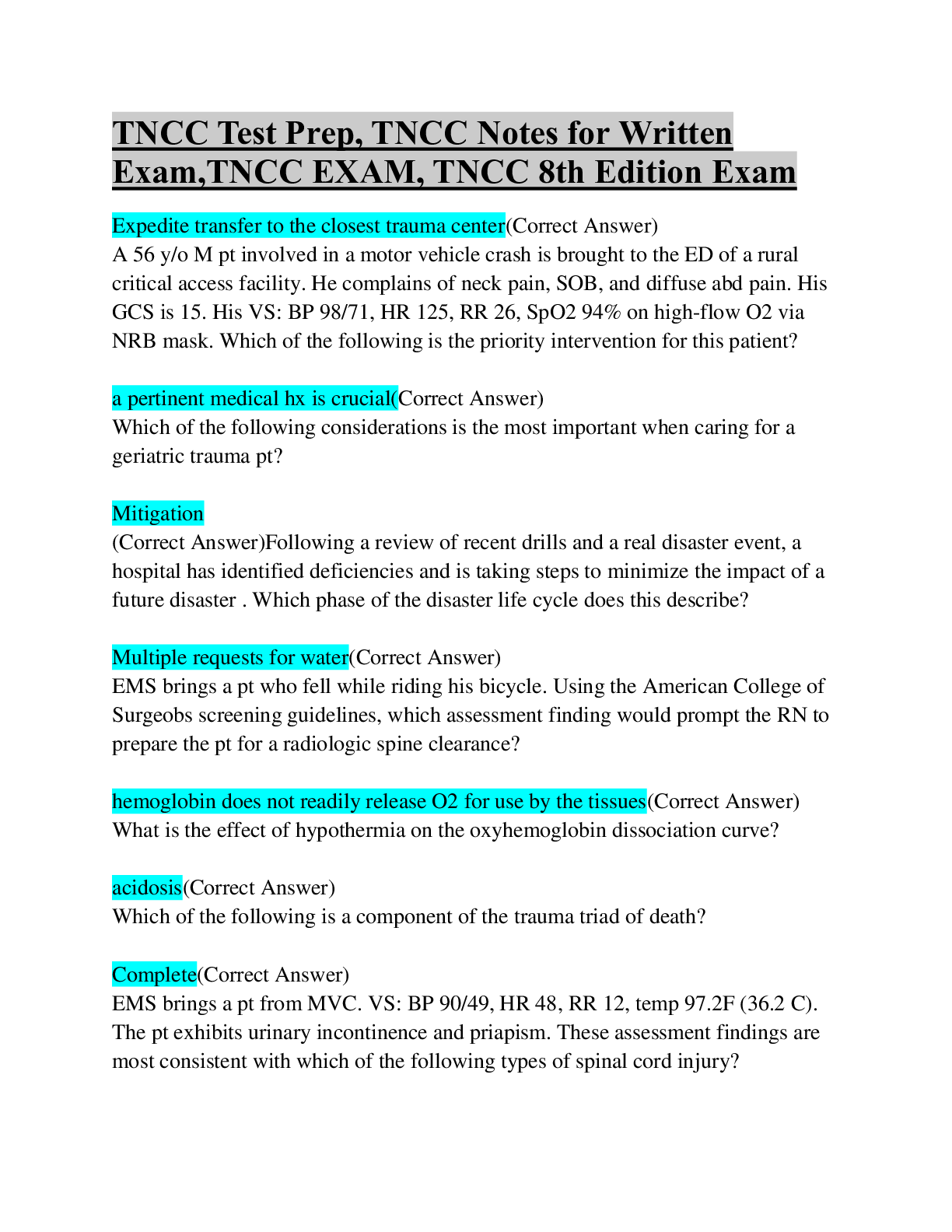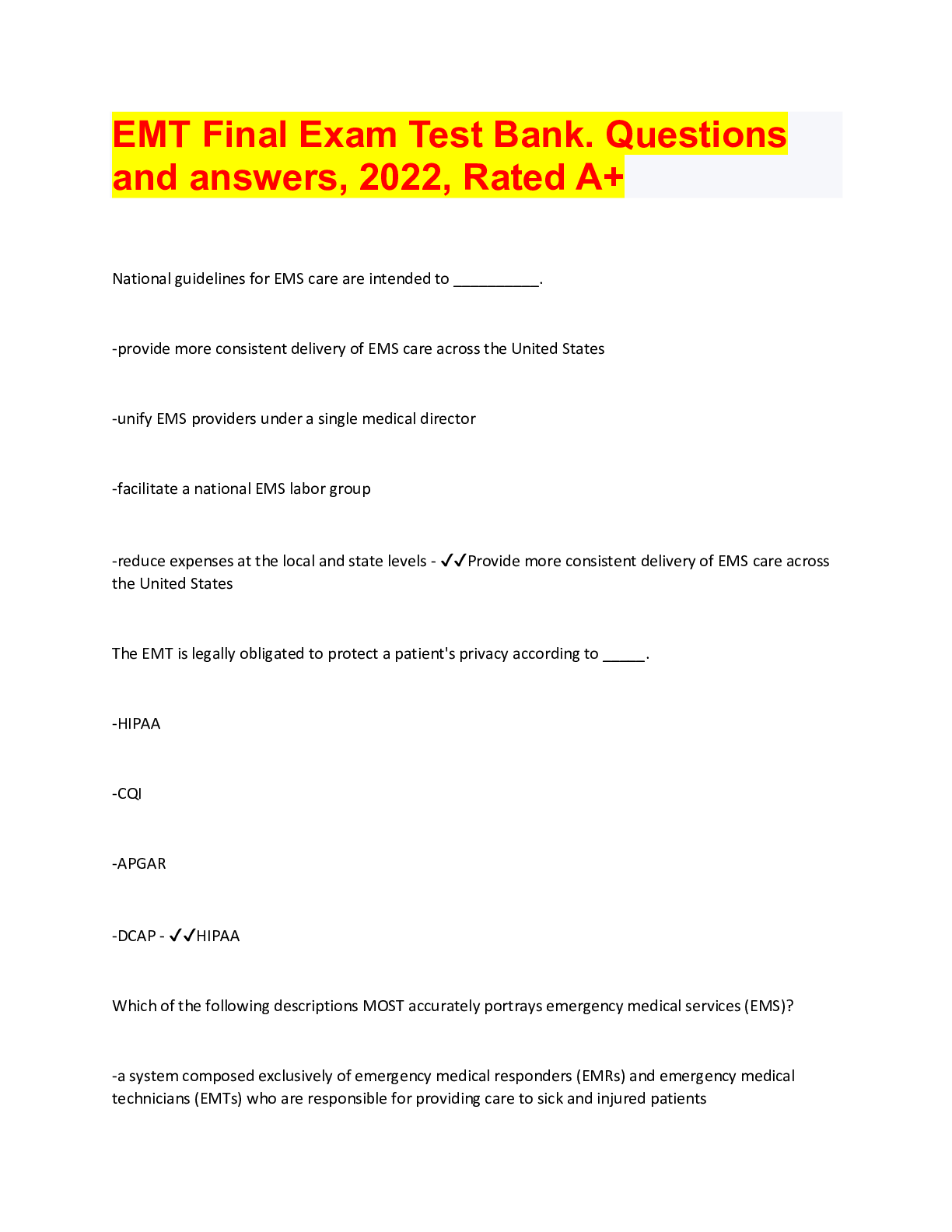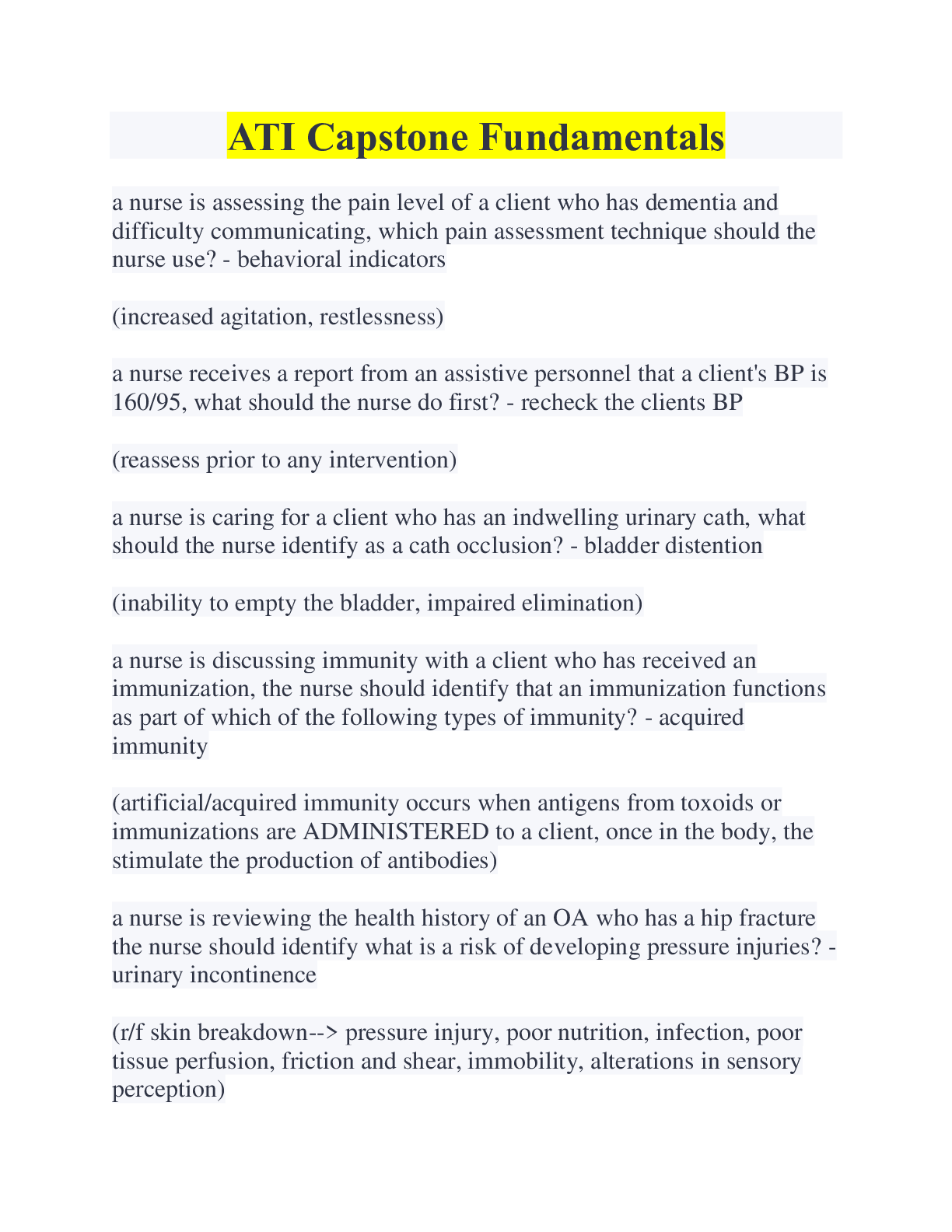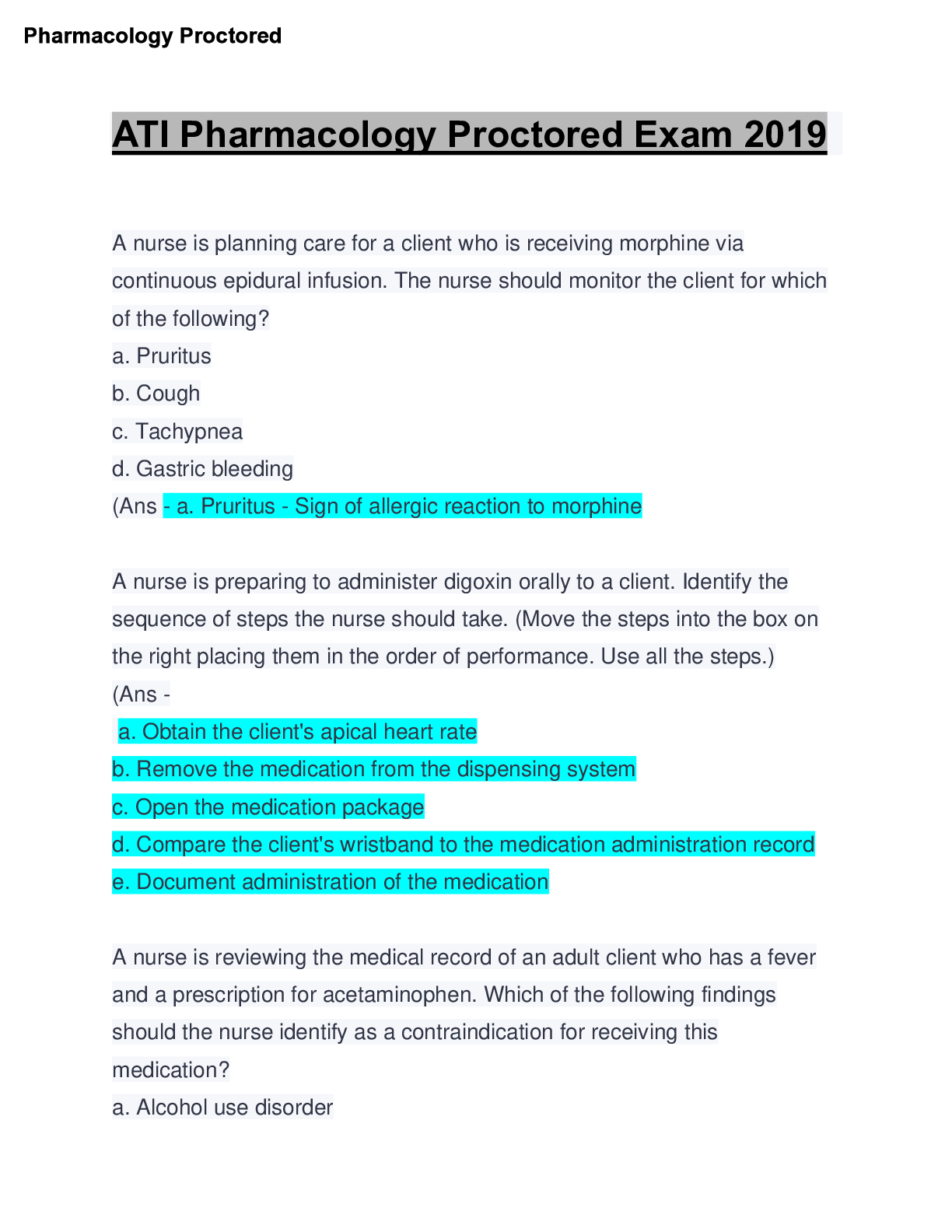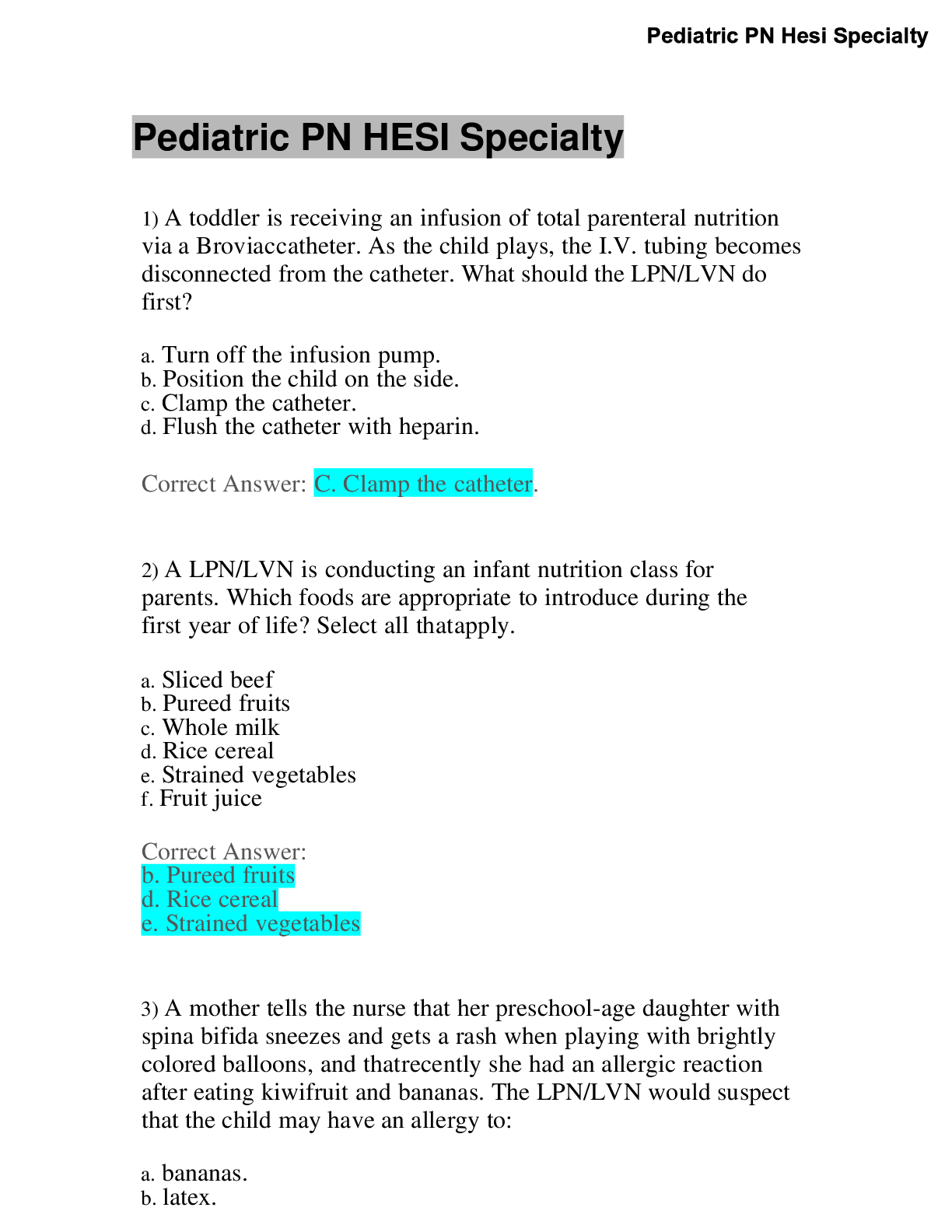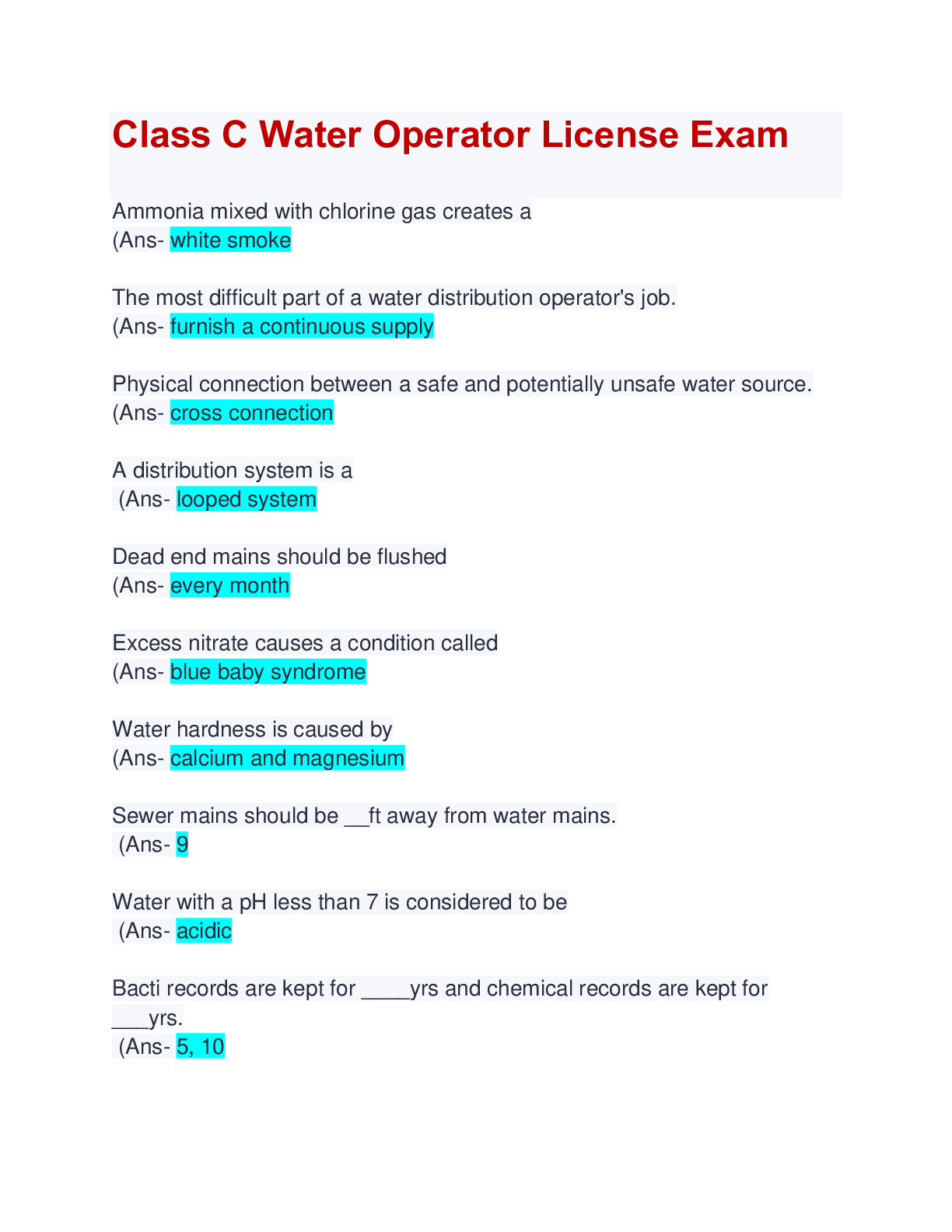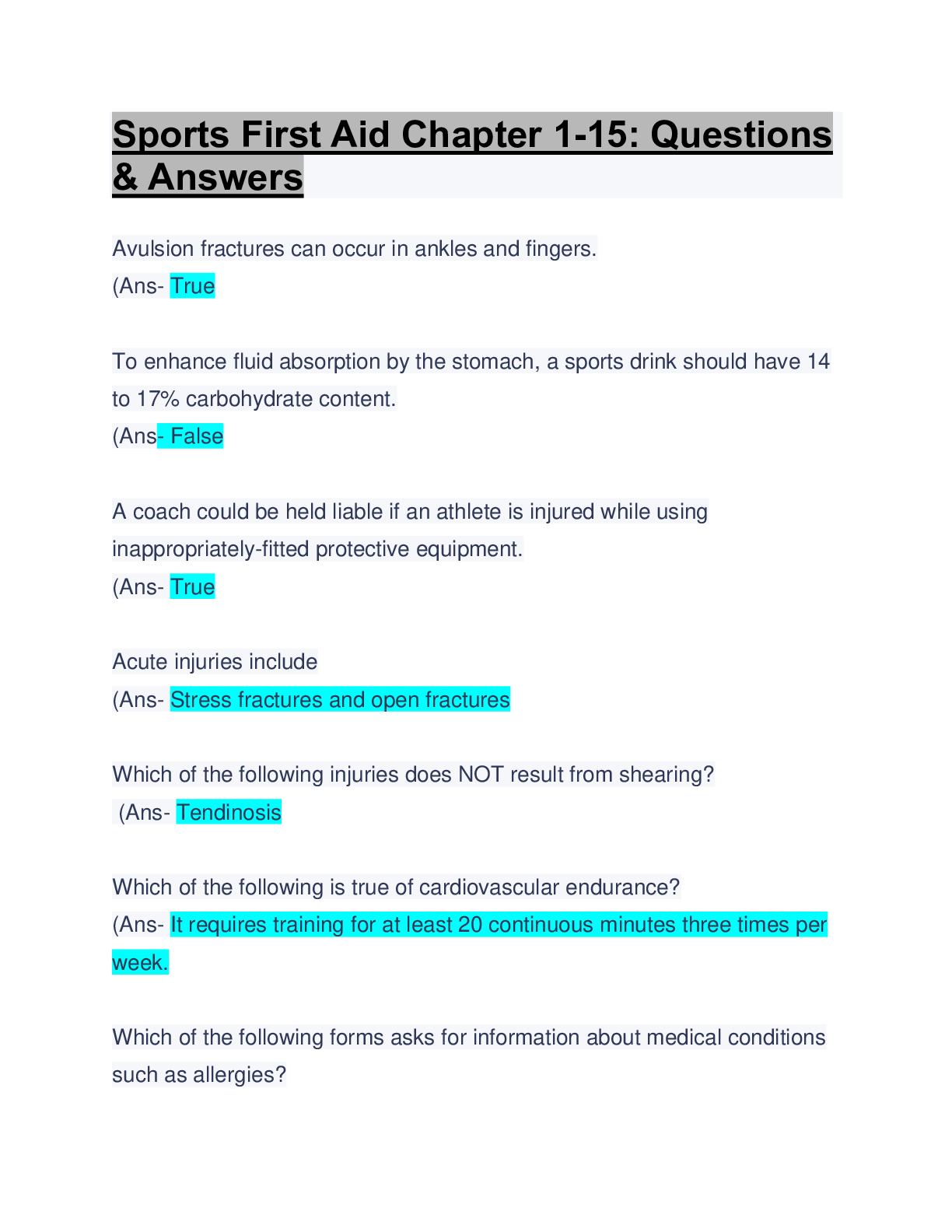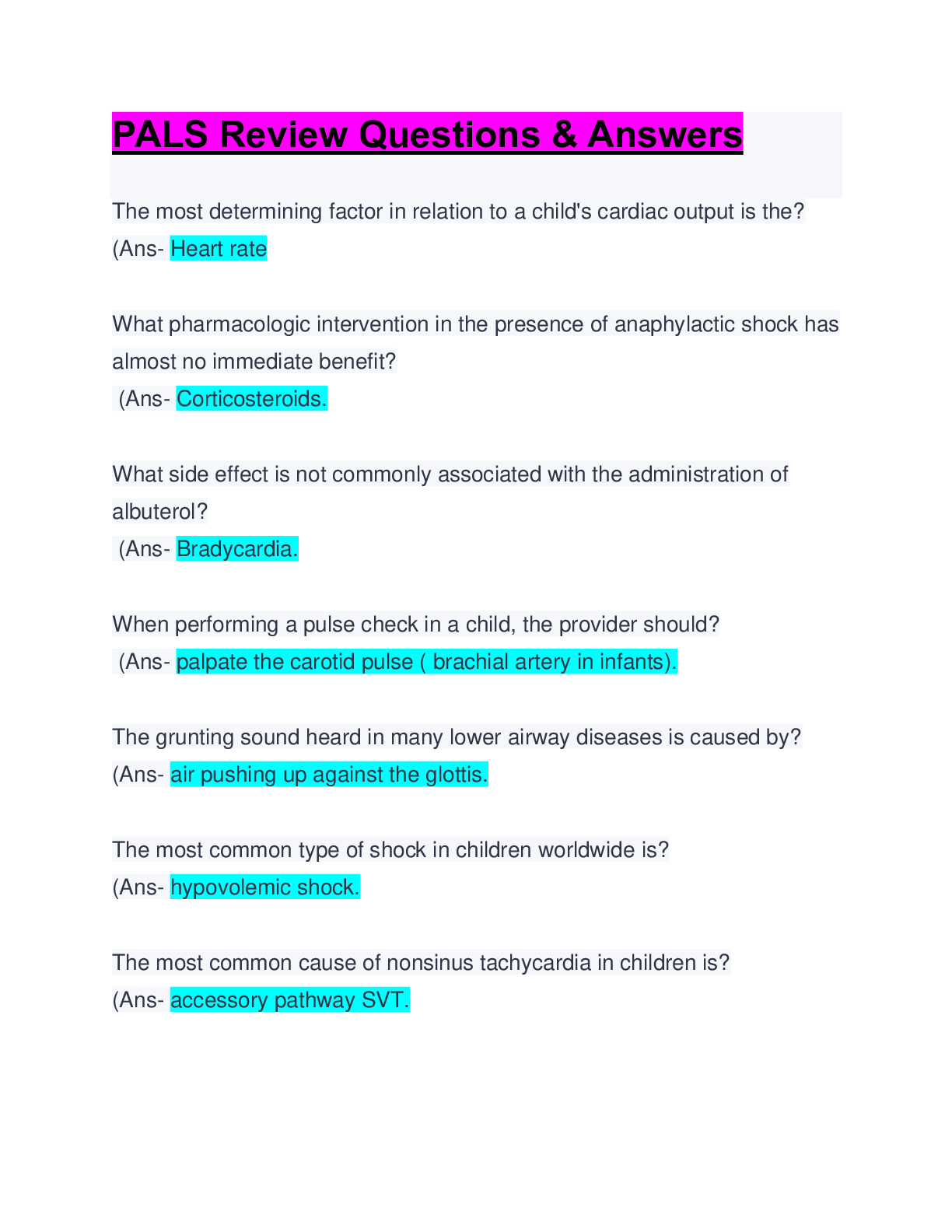Health Care > EXAM > Adult Health HESI Test-Bank: Questions & Answers: Updated A+ Guide Solution (All)
Adult Health HESI Test-Bank: Questions & Answers: Updated A+ Guide Solution
Document Content and Description Below
ENDOCRINE DISORDERS 1. Nurse Ronn is assessing a client with possible Cushing’s syndrome. In a client with Cushing’s syndrome, the nurse would expect to find: a. Hypotension. b. Thick, coars... e skin. c. Deposits of adipose tissue in the trunk and dorsocervical area. d. Weight gain in arms and legs. 1. Answer C. Because of changes in fat distribution, adipose tissue accumulates in the trunk, face (moonface), and dorsocervical areas (buffalo hump). Hypertension is caused by fluid retention. Skin becomes thin and bruises easily because of a loss of collagen. Muscle wasting causes muscle atrophy and thin extremities. 2. A male client with primary diabetes insipidus is ready for discharge on desmopressin (DDAVP). Which instruction should nurse Lina provide? a. “Administer desmopressin while the suspension is cold.” b. “Your condition isn’t chronic, so you won’t need to wear a medical identification bracelet.” c. “You may not be able to use desmopressin nasally if you have nasal discharge or blockage.” d. “You won’t need to monitor your fluid intake and output after you start taking desmopressin.” 2. Answer C. Desmopressin may not be absorbed if the intranasal route is compromised. Although diabetes insipidus is treatable, the client should wear medical identification and carry medication at all times to alert medical personnel in an emergency and ensure proper treatment. The client must continue to monitor fluid intake and output and receive adequate fluid replacement. 3. Nurse Wayne is aware that a positive Chvostek’s sign indicate? a. Hypocalcemia b. Hyponatremia Hypokalemia d. Hypermagnesemia a. Hypocalcemia b. Hyponatremia Hypokalemia d. Hypermagnesemia 3. Answer A. Chvostek’s sign is elicited by tapping the client’s face lightly over the facial nerve, just below the temple. If the client’s facial muscles twitch, it indicates hypocalcemia. Hyponatremia is indicated by weight loss, abdominal cramping, muscle weakness, headache, and postural hypotension. Hypokalemia causes paralytic ileus and muscle weakness. Clients with hypermagnesemia exhibit a loss of deep tendon reflexes, coma, or cardiac arrest. Adult Health HESI Test-Bank 4. In a 29-year-old female client who is being successfully treated for Cushing’s syndrome, nurse Lyzette would expect a decline in: a. Serum glucose level. b. Hair loss. Bone mineralization. d. Menstrual flow. a. Serum glucose level. b. Hair loss. Bone mineralization. d. Menstrual flow. 4. Answer A. Hyperglycemia, which develops from glucocorticoid excess, is a manifestation of Cushing’s syndrome. With successful treatment of the disorder, serum glucose levels decline. Hirsutism is common in Cushing’s syndrome; therefore, with successful treatment, abnormal hair growth also declines. Osteoporosis occurs in Cushing’s syndrome; therefore, with successful treatment, bone [Show More]
Last updated: 1 year ago
Preview 1 out of 141 pages
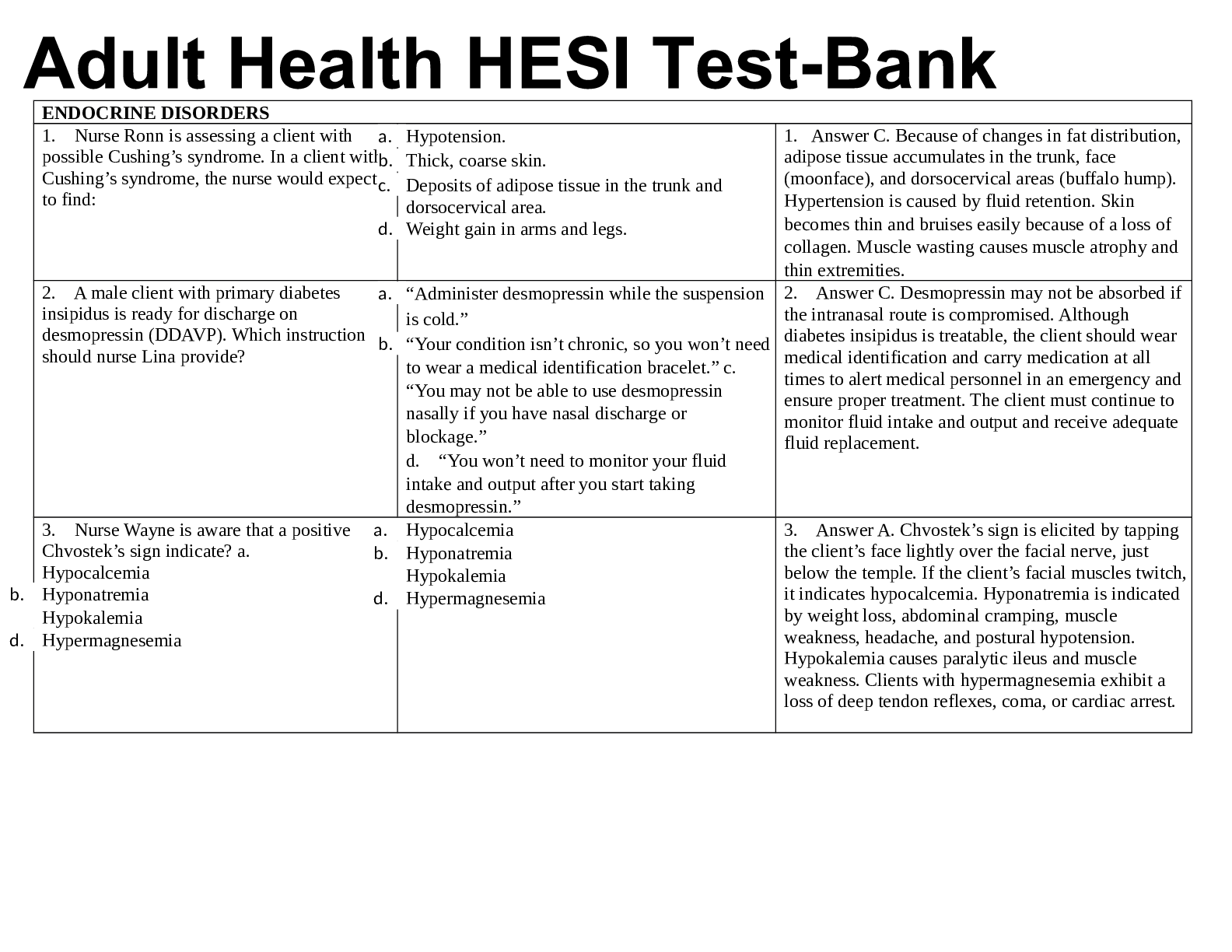
Reviews( 0 )
Document information
Connected school, study & course
About the document
Uploaded On
Apr 07, 2023
Number of pages
141
Written in
Additional information
This document has been written for:
Uploaded
Apr 07, 2023
Downloads
0
Views
20



